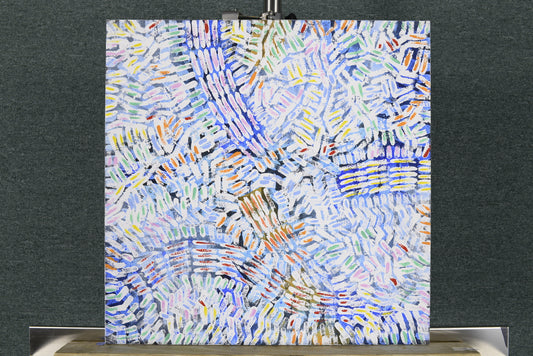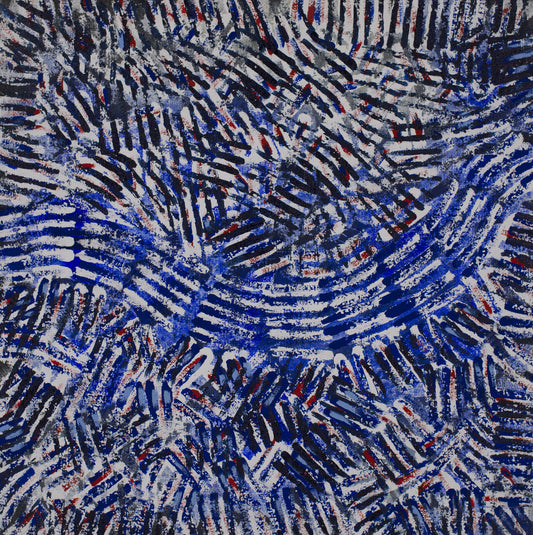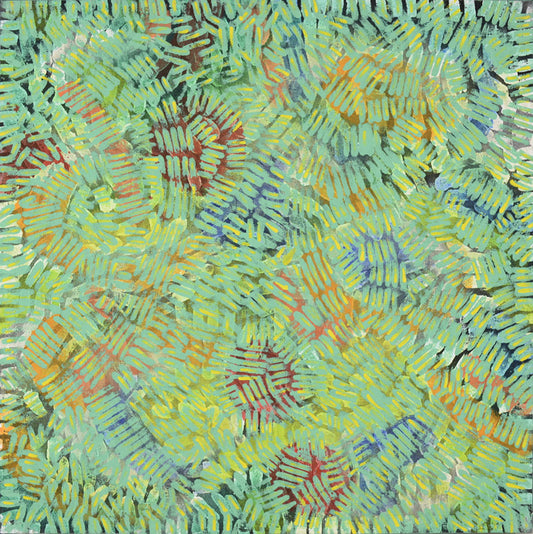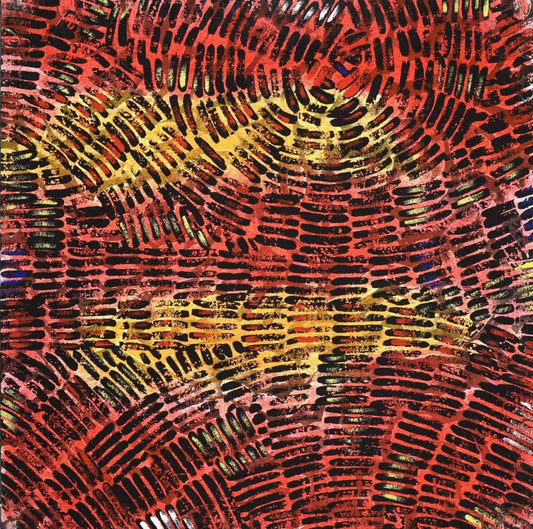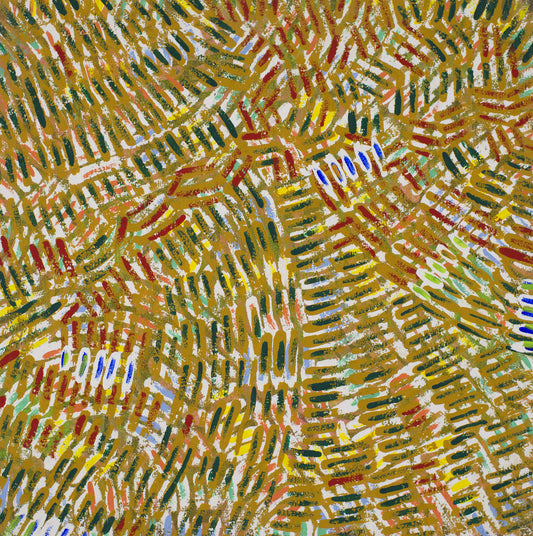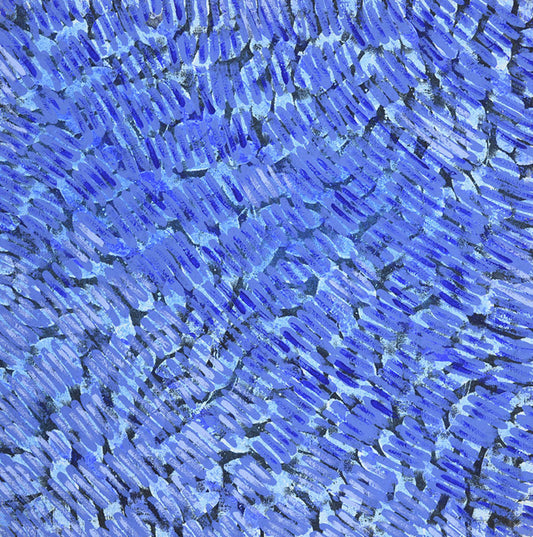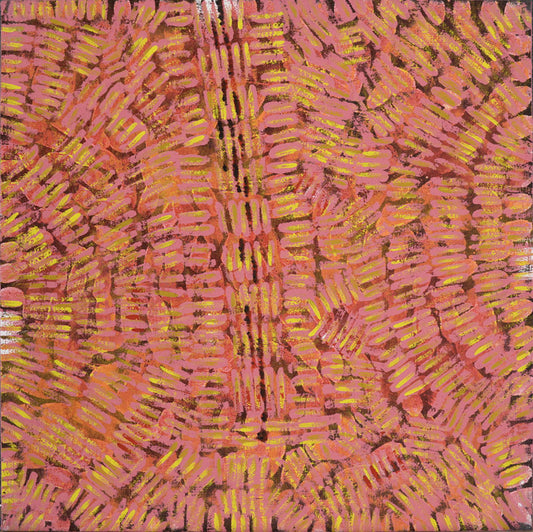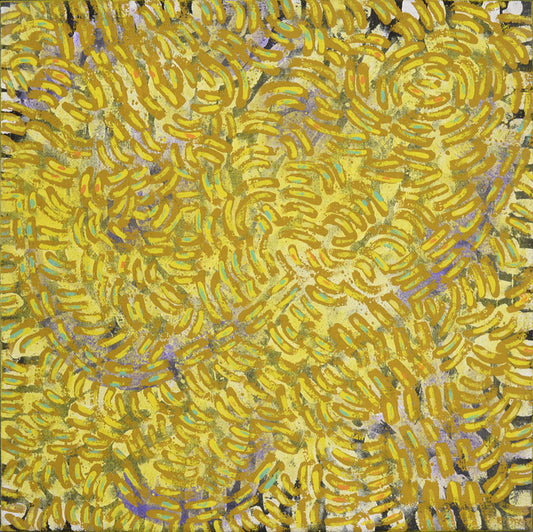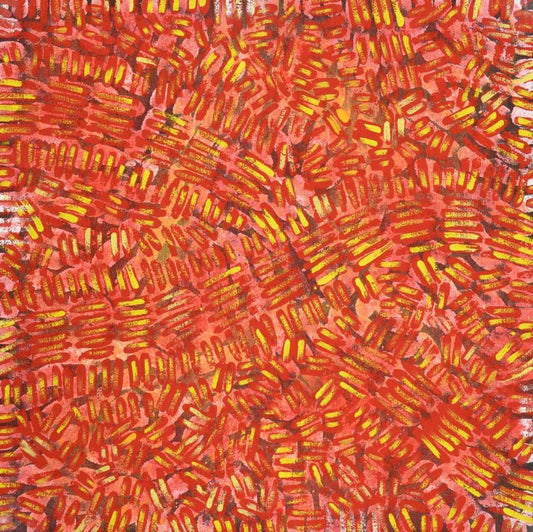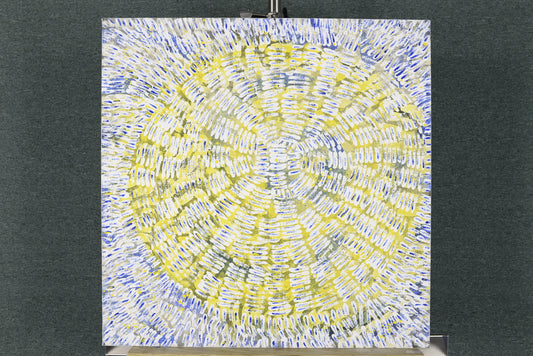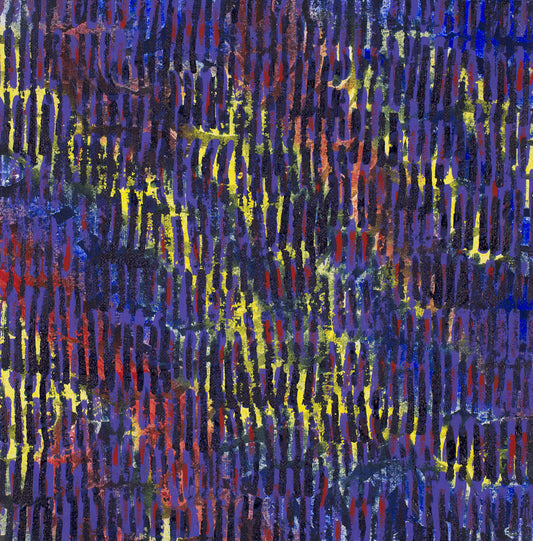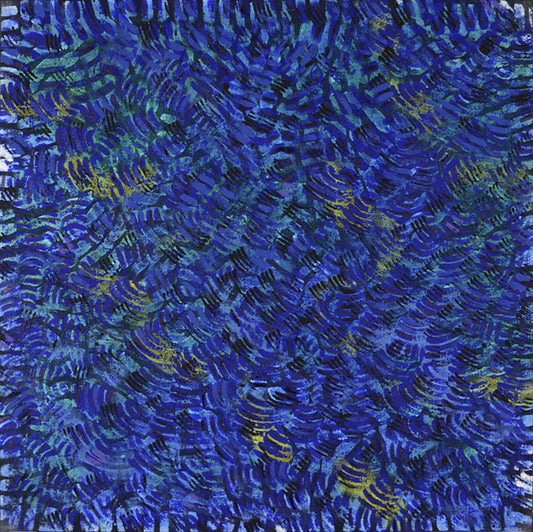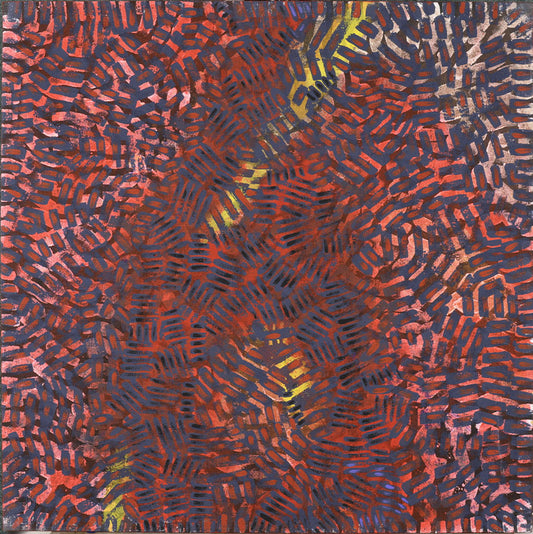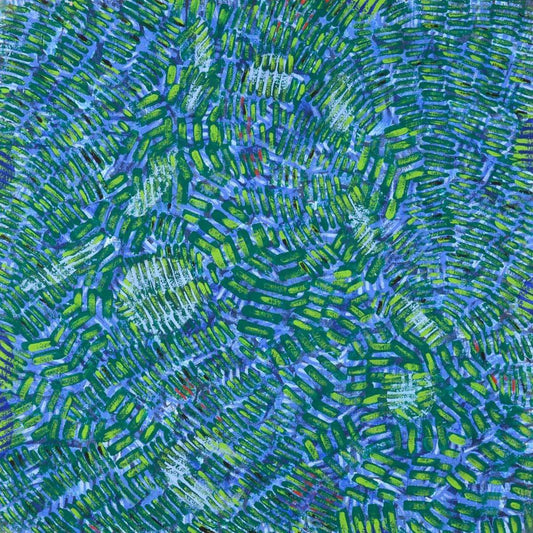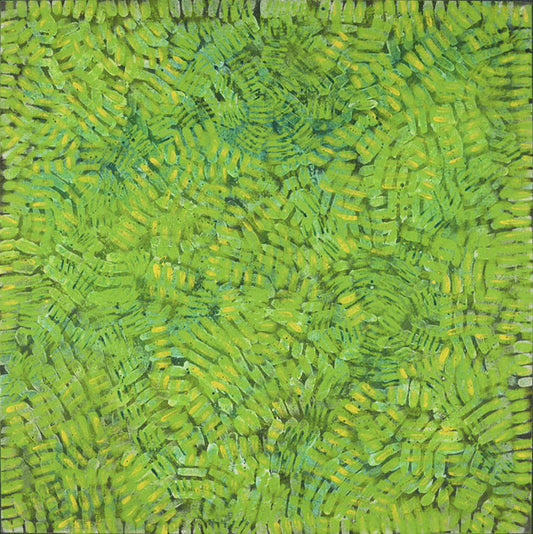Collection: Giorgio Kiaris
Giorgio Kiaris, an artist deeply connected to nature, creates vibrant ecological paintings that explore the Earth, sea, and seasons. His dynamic brushwork and harmonious color combinations convey energy and balance. His art embodies a personal relationship with nature, promoting love and respect for the environment. Kiaris' work transitions from geometric patterns to abstract, using layers of color to evoke perspective and depth. He often employs jute, a material symbolizing tradition and simplicity. Titles like "Fiore Nascosto" and "Luce Disordinata" reflect his connection to the elements. His latest series, "Cromografie," explores the unknown and represents a transition in his artistic journey, offering a new perspective on nature and perception.
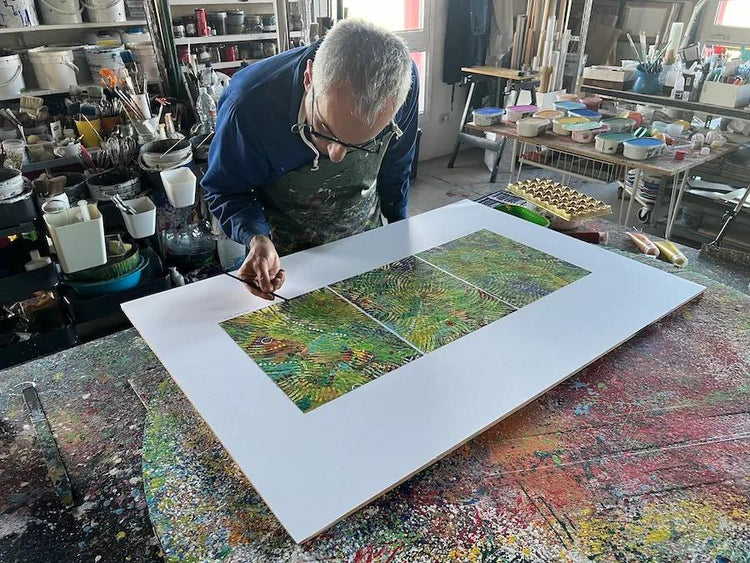
-
The Fairy Tale
Regular price $1,800.00 USDRegular priceUnit price / per -
The Blue way
Regular price $2,600.00 USDRegular priceUnit price / per -
Scattered Dreams
Regular price $5,200.00 USDRegular priceUnit price / per -
Restless Illusion
Regular price $3,600.00 USDRegular priceUnit price / per -
Infinite Appearances
Regular price $3,000.00 USDRegular priceUnit price / per -
Blue Escape
Regular price $4,300.00 USDRegular priceUnit price / per -
Where are You?
Regular price $0.00 USDRegular priceUnit price / per -
Untidy Light
Regular price $1,800.00 USDRegular priceUnit price / per -
Traces of Fire
Regular price $3,600.00 USDRegular priceUnit price / per -
The Promise Moon
Regular price $5,200.00 USDRegular priceUnit price / per -
The Ballad of the Night
Regular price $2,600.00 USDRegular priceUnit price / per -
Intrigue of the Ocean
Regular price $6,200.00 USDRegular priceUnit price / per -
Hamlet Thought
Regular price $6,200.00 USDRegular priceUnit price / per -
Green Infinity
Regular price $6,200.00 USDRegular priceUnit price / per -
Green Passion
Regular price $9,600.00 USDRegular priceUnit price / per

